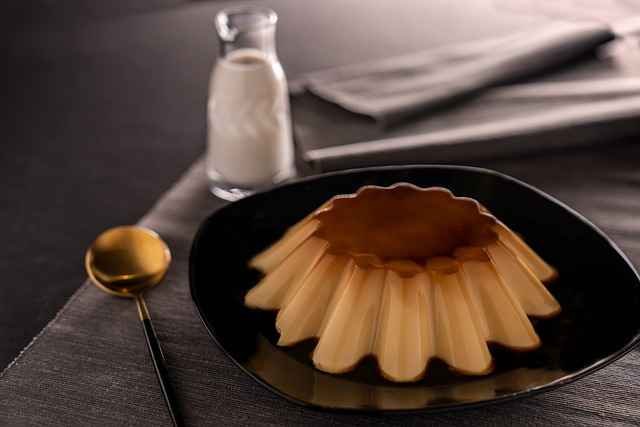Caramel is a delicious and versatile ingredient that is commonly used in various recipes, from desserts to beverages. However, if you are a vegan, you might be wondering whether caramel is a vegan-friendly ingredient or not. In this article, we will explore the question of whether caramel is vegan or not, and provide you with all the information you need to make an informed decision.
What is Caramel?
Caramel is a sweet, golden-brown sauce or candy that is made by heating sugar, water, and sometimes milk or cream until it turns into a thick, syrupy consistency. It is a popular ingredient in desserts, confectionery, and sauces, and is used to add sweetness, flavor, and color to a variety of recipes. Caramel is a staple ingredient in many household kitchens, and can be found in a range of commercial products, from candy bars to ice cream.
How is Caramel Made?
There are two main methods of making caramel: dry and wet caramelization. Dry caramelization involves heating sugar in a dry pan until it melts and turns into a golden-brown color. Wet caramelization, on the other hand, involves heating sugar with water until it dissolves and forms a syrup, which is then cooked until it thickens and turns brown.
Caramel can also be made by adding milk or cream to the sugar and water mixture, which results in a creamier, smoother texture and a richer flavor. However, this type of caramel is not suitable for vegans, as it contains dairy.
Is Caramel Vegan?
The answer to whether caramel is vegan or not depends on the ingredients used to make it. Traditional caramel, which is made with just sugar and water, is vegan-friendly, as it does not contain any animal products. However, some commercial caramel products may contain other ingredients, such as milk, cream, butter, or honey, which are not vegan.
When buying caramel, it is important to check the ingredients list carefully to ensure that it is vegan-friendly. If the product contains any non-vegan ingredients, such as dairy or honey, it should be avoided.
Vegan Alternatives to Caramel
If you are a vegan and want to enjoy the delicious flavor of caramel, there are plenty of vegan-friendly alternatives available. Here are some options:
Date Caramel
Date caramel is a popular vegan alternative to traditional caramel that is made by blending dates with water or non-dairy milk until it forms a smooth, creamy paste. It has a similar flavor and texture to caramel and can be used in a variety of recipes, from cakes to cookies.
Coconut Caramel
Coconut caramel is a vegan-friendly alternative to traditional caramel that is made by cooking coconut milk, sugar, and vanilla extract until it thickens and turns brown. It has a rich, creamy texture and a delicious flavor that is perfect for desserts and sauces.
Maple Syrup Caramel
Maple syrup caramel is a simple and delicious vegan alternative to traditional caramel that is made by cooking maple syrup until it thickens and turns golden-brown. It has a sweet, nutty flavor that is perfect for drizzling over pancakes, waffles, or ice cream.
Similarities and Differences between Caramel and Butterscotch
Caramel and butterscotch are both made from sugar and butter, but the way they are made and the ingredients used make them unique. Caramel is made by heating sugar until it turns a deep brown color, while butterscotch is made by cooking brown sugar with butter and cream. The result is a sweet, creamy treat that has a distinct taste and texture.
One of the main differences between caramel and butterscotch is their taste. Caramel has a rich, deep flavor with a slightly bitter aftertaste, while butterscotch is sweeter and has a subtle caramel-like flavor. Another difference is their texture. Caramel is smooth and chewy, while butterscotch is creamy and slightly grainy.
Why People May Confuse the Two
Despite their distinct differences, many people confuse caramel and butterscotch. One reason for this is their similar ingredients. Both are made from sugar and butter, which can make them look and taste alike. Additionally, many recipes use the two interchangeably, further contributing to the confusion.
Another reason people may confuse the two is the way they are used in desserts. Both caramel and butterscotch are commonly used as toppings for ice cream, butterscotch pudding, and other sweet treats. This can make it difficult to tell the two apart, especially when they are mixed with other ingredients.
Recipes That Use Caramel vs. Recipes That Use Butterscotch
Caramel and butterscotch are used in different ways in recipes. Caramel is often used as a topping for desserts, such as caramel apples, caramel flan, and caramel sauce for ice cream. Butterscotch, on the other hand, is often used in baked goods, such as butterscotch brownies, butterscotch cookies, and butterscotch pudding.
While caramel and butterscotch are both delicious, they have distinct flavors that work better with certain recipes. Caramel’s rich, deep flavor pairs well with desserts that have a strong flavor, such as chocolate or coffee. Butterscotch’s sweeter, more subtle flavor works well with desserts that have a lighter, creamier taste, such as vanilla or fruit.
Conclusion
Caramel is a delicious and versatile ingredient that can be enjoyed by vegans, as long as it is made with vegan-friendly ingredients. Traditional caramel, which is made with just sugar and water, is vegan-friendly, but some commercial products may contain non-vegan ingredients, such as dairy or honey. If you are a vegan, it is important to check the ingredients list carefully before buying caramel.

